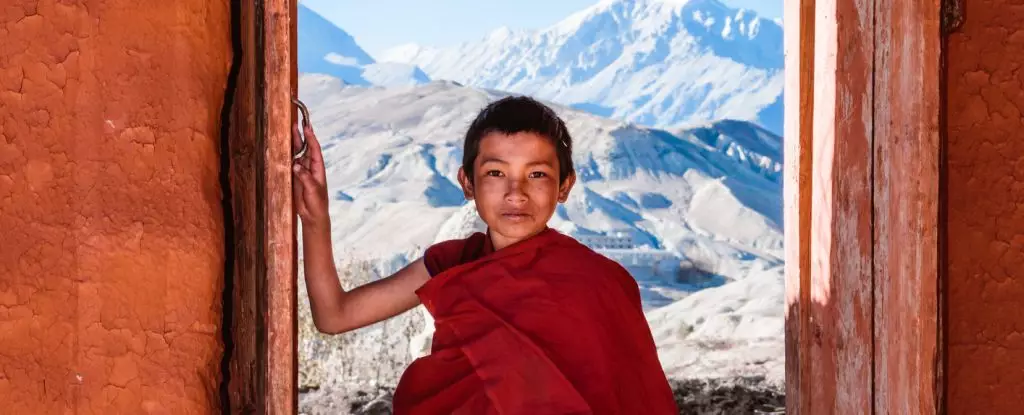Human evolution is not a finished story; rather, it is an ongoing saga marked by adaptations that reflect our ability to thrive in diverse environments. This remarkable journey showcases how our biology is sculpted by the challenges presented by our surroundings. A striking example lies in the high-altitude communities of the Tibetan Plateau. Here, where oxygen is scarce and the air is thin, human beings have forged a lifestyle that would baffle the average person acclimatized to sea-level living. These adaptations are not merely physiological changes, but a testament to the incredible resilience of our species, which continues to evolve in response to environmental pressures.
The High-Altitude Dilemma: Challenges and Triumphs
Adventure enthusiasts, particularly mountain climbers, are all too familiar with the debilitating effects of altitude sickness—an affliction resulting from decreased atmospheric pressure at high altitudes that drastically reduces the oxygen available for our bodies. For most, this atmosphere can be perilous, leading to conditions like hypoxia, where the body is deprived of adequate oxygen. However, Tibetan populations have thrived in this challenging environment for over 10,000 years, showcasing an extraordinary evolutionary narrative. The capacity to adapt to such adverse conditions not only influences survival but also shapes reproductive success, laying the groundwork for generations that can withstand these challenges.
Scientific Insights into Adaptation
Anthropologist Cynthia Beall, a trailblazer in the field, has dedicated herself to uncovering the physiological secrets that allow Tibetan individuals to navigate life where oxygen levels are insufficient for most. In groundbreaking research published in late 2024, Beall’s findings illuminate the multifaceted adaptations of these high-altitude communities. One key aspect of her research focuses on reproductive success, the cornerstone of evolutionary fitness. The ability of women to deliver live births is a vital metric, as it directly impacts the sustainability of any population. With the Tibetan women experiencing an average of 5.2 live births each, their unique physiological traits come under the spotlight.
These adaptations encompass various biological mechanisms that ensure efficient oxygen delivery without taxing the body in harmful ways. The measurements taken during the study revealed the importance of balanced hemoglobin levels—neither too high nor too low—for maximizing oxygen saturation in the blood. This finding contradicts traditional notions that higher hemoglobin levels guarantee better oxygen transport, emphasizing instead the critical role of balance in physiological adaptations.
The Role of Natural Selection in Shaping Survival
The heart of natural selection lies within the women who manage to navigate the rigors of altitude while consistently delivering healthy offspring. Beall and her team studied 417 Nepalese women living at altitudes exceeding 11,480 feet. The results hinted at a symphony of adaptations; those with optimal hemoglobin saturation and a vascular system capable of increased blood flow into the lungs demonstrated significantly higher reproductive success. Interestingly, the physical structure of their hearts also played a vital role, with wider left ventricles signifying more robust systems for pumping oxygenated blood throughout the body.
Yet the story does not end with physiology alone. Cultural elements also intertwine with biology—young maternal age and the length of marriages contribute to the potential for more live births. This multifaceted interplay between culture and biology illustrates how human beings are not simply victims of their environments but active participants in a complex dance of adaptation and survival.
Continuing the Legacy of Adaptation
The adaptations seen in Tibetan women mirror ongoing evolutionary processes, underscoring how human beings are still “cooking” in the metaphorical sense. The traits that evolve in response to environmental challenges are often surprising and complex. For instance, the observation that women with modest hemoglobin levels can achieve reproductive success highlights the adaptive nature of human physiology; it is not about having more of one thing but about having the right balance of traits to foster survival in specific conditions.
The revelations from this research prompt deeper questions about human adaptability. They raise awareness of how populations can evolve not just physically, but also socially, marrying biological strengths with cultural practices to enhance survival chances. The capability of communities to thrive in extreme environments holds vital lessons for our understanding of resilience and adaptability, values central to the human experience. As we continue to delve into the intricacies of human biology, it becomes increasingly evident that our evolutionary journey remains far from complete; it is, in fact, a canvas still being painted with the hues of humanity’s remarkable adaptability.


Leave a Reply